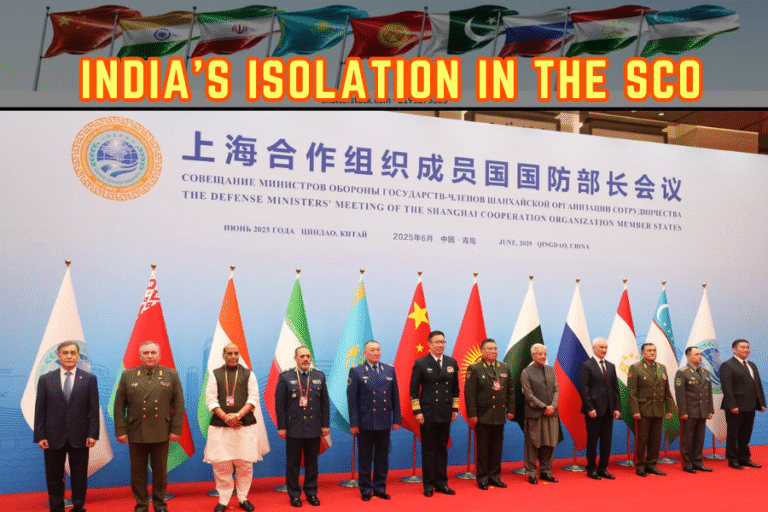(By Khalid Masood)
In May 2025, as Pakistan basked in the afterglow of its military triumph over India’s ill-fated Operation Sindoor, a quieter revolution took root. The government, seizing a moment of geoeconomic opportunity, allocated 2,000 megawatts (MW) of surplus electricity to fuel Bitcoin mining and artificial intelligence (AI) data centers, heralding a bold leap into the digital frontier (Dawn, May 25, 2025). With a $340B economy strained by 8% inflation and 40% poverty, this initiative, spearheaded by the Pakistan Crypto Council (PCC) and backed by $20B in World Bank pledges, aims to monetize excess power, attract billions in foreign investment, and outpace regional rivals like India (World Bank, 2024; Reuters, May 25, 2025). Yet, as nations like Bhutan, El Salvador, Kazakhstan, and Iceland reveal, harnessing surplus energy for crypto and AI is a high-stakes gamble, fraught with economic promise and environmental peril. This article, woven through evocative prose, geoeconomic insight, and technological analysis, explores Pakistan’s digital pivot, global lessons, and the path to a resilient, prosperous future.
1. Pakistan’s Energy Surplus: A Digital Opportunity
Pakistan’s power grid, with a capacity of 42,000 MW, generates a surplus of 10,000–15,000 MW, thanks to solar adoption and $62B in China-Pakistan Economic Corridor (CPEC) energy projects (Reuters, Apr 9, 2025; Xinhua, May 2025). Yet, coal plants operate at a mere 15%, and 20M rural citizens lack electricity, underscoring inefficiencies (Dawn, Jun 2025). On May 25, 2025, the Ministry of Finance unveiled a plan to channel 2,000 MW—5% of capacity—to crypto mining and AI, targeting $2B in foreign direct investment (FDI) and 5,000 high-tech jobs (The Shib Daily, Jun 2, 2025). Supported by Binance’s Changpeng Zhao and Pakistan’s 40M crypto users (9th globally), the initiative leverages war dividends, including $20B from the World Bank and $2B from Azerbaijan (Chainalysis, 2024; The News, Jun 2, 2025).
The Pakistan Digital Assets Authority (PDAA) oversees the rollout, offering tax incentives and $0.03/kWh tariffs to attract firms like Bitdeer (Bloomberg, May 2025). Phase one focuses on urban hubs in Karachi and Lahore, with phase two eyeing renewable integration, tapping Pakistan’s 50,000 MW wind potential (web:5). However, the International Monetary Fund (IMF), wary of Pakistan’s $2.1B loan obligations, flags regulatory gaps and coal reliance, urging a robust framework (Reuters, May 25, 2025).
2. The Global Pioneers: Lessons from the Field
Pakistan is not alone in leveraging surplus electricity for digital economies. Bhutan, El Salvador, Kazakhstan, and Iceland offer case studies, each revealing pathways and pitfalls for Islamabad’s ambitions.
Bhutan: Hydropower Haven
Bhutan’s 500 MW hydropower-driven Bitcoin mining, launched in 2019 by Druk Holding, generates $80M annually, boosting its $2.5B GDP by 2% (Bloomberg, May 2024; World Bank, 2024). Holding 2,500 BTC ($250M), it attracted $500M FDI from Bitdeer, creating 200 jobs (Reuters, Jun 2023). Its 98% renewable grid minimizes emissions, but seasonal shortages and elite control spark public dissent (Ember, 2022; X:@BhutanWatch, Apr 2025). Lesson: Pakistan can emulate Bhutan’s FDI success but must ensure transparent profit distribution to its 240M citizens.
El Salvador: Volcanic Ambition
El Salvador’s 300 MW geothermal mining, started in 2021, yields 474 BTC ($47M), with plans for 1,000 MW by 2027 (Cointelegraph, Jan 2025). Despite $200M FDI, only 2% of transactions use Bitcoin, and 60% oppose the policy amid 7% inflation (IMF, 2024; Latinobarómetro, 2024). Geothermal reduces emissions, but grid strain and IMF loan delays ($1.4B) highlight risks (Reuters, May 2025). Lesson: Pakistan needs a strong PDAA to avoid El Salvador’s regulatory woes and public backlash.
Kazakhstan: Boom to Bust
Kazakhstan’s 2,000 MW coal-based mining peaked at $1.5B (3% of $340B GDP) in 2022, hosting 18% of global hashpower (Cambridge CBAP, 2023). It drew $700M FDI but triggered blackouts, slashing hashpower to 5% by 2024 (Reuters, 2023). Coal emissions (30M tons CO2) and protests over tariffs cost $500M as miners fled (UNEP, 2023; Al Jazeera, Feb 2022). Lesson: Pakistan must prioritize renewables to avoid grid failures and environmental scrutiny.
Iceland: Green Benchmark
Iceland’s 100 MW geothermal and hydro centers contribute $200M yearly (1% of $20B GDP), supporting 500 jobs (World Bank, 2024; Bloomberg, Mar 2024). Its 100% renewable grid sets a green standards, but tariff hikes (5%) and capacity limits hinder growth (RÚV, 2025). Lesson: Pakistan’s phase-two renewable plan can mirror Iceland’s sustainability, ensuring long-term competitiveness.
3. Economic Promise: A Billion-Dollar Horizon
Pakistan’s 2,000 MW allocation could generate $1.5B annually, akin to Kazakhstan’s peak, leveraging its 15th-ranked crypto market (Chainalysis, 2024). With 15–20M crypto users, Pakistan could attract $2B FDI, matching Bhutan’s per-capita impact, and create 5,000–10,000 jobs in AI and blockchain (Bloomberg, 2025). War dividends amplify this: Azerbaijan’s $2B IT investment, Russia’s $2.6B steel mill jobs, and $15B Gulf remittances provide liquidity (The News, Jun 2025). U.S. trade talks, post-Trump’s 2025 push, could add $5B in tech exports, diversifying Pakistan’s $19B textile base (AFP, May 2025).
Crypto mining alone could boost GDP by 0.5%, while AI centers, supporting CPEC’s digital trade, may add 1%, per McKinsey (World Bank, 2024; McKinsey, 2024). Karachi’s tech hub could rival India’s Bengaluru, hamstrung by regulatory delays (web:1). X users hail Pakistan’s “digital leap” (@CryptoPakistan, Jun 3, 2025).
4. Environmental and Social Challenges
Pakistan’s coal plants, emitting 30M tons of CO2 at 15% capacity, risk Kazakhstan-style backlash (web:7). The IMF warns of sanctions if emissions rise, threatening $2.1B loans (Reuters, May 2025). Rural energy inequity—20M unelectrified—could fuel protests, as in Bhutan, given 40% poverty (World Bank, 2024). Urban focus (Karachi, Lahore) may widen disparities, with 60% distrusting institutions (Gallup, 2024).
Renewables offer a solution. Pakistan’s 50,000 MW wind and 10,000 MW solar potential can power phase two, mirroring Iceland’s green model (web:5). Transparent job allocation, unlike El Salvador’s elite capture, is critical (X:@PakStratprism, Jun 2, 2025).
5. Strategic Imperatives for Success
To realize its digital vision, Pakistan must address three imperatives:
- Robust Regulation: Establish PDAA with clear tax codes and anti-money laundering (AML) rules, avoiding El Salvador’s IMF snags (web:14). Blockchain-based audits, as in Singapore, can ensure transparency (Transparency International, 2024).
- Renewable Integration: Allocate $5B from World Bank funds to wind farms, targeting 5,000 MW by 2030, emulating Bhutan (web:5). Phase out coal to meet UN climate goals (UNEP, 2023).
- Equitable Access: Extend grid to 10M rural households, using Gulf remittances, to curb unrest (Dawn, Jun 2025). Train 50,000 youth in AI, leveraging Azerbaijan’s IT know-how (Reuters, Sep 2024).
6. Conclusion: A Digital Destiny
Pakistan’s 2,000 MW gamble, fueled by war dividends and global partnerships, positions it to rival Asia’s digital titans. Bhutan’s revenue, Iceland’s sustainability, and Kazakhstan’s FDI show the path, while El Salvador’s stumbles warn of pitfalls. By blending robust regulation, green energy, and inclusive growth, Pakistan can transform surplus power into billions, empowering its 240M people. As Allama Iqbal envisioned, “The world is not a thing completed; it is a process.” Pakistan’s digital process, if steered with wisdom, can forge a future where prosperity, not conflict, defines its borders.







